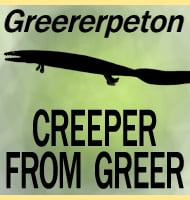In Depth
Piceoerpeton was a genus of large prehistoric salamander that that lived in North America from the late Creaceous to the early Eocene.
Further Reading
A new cryptobranchid salamander from the Early Eocene of Wyoming. – Copeia 1967(2):346-349 – C. A. M. Meszoely – 1967. – Revision of Piceoerpeton Meszoely (Caudata: Scapherpetontidae) and description of a new species from the late Maastrichtian and ?early Paleocene of western North America. – Bulletin de la Soci�t� G�ologique de France. 183 (6): 611–620. – James D. Gardner – 2012.









